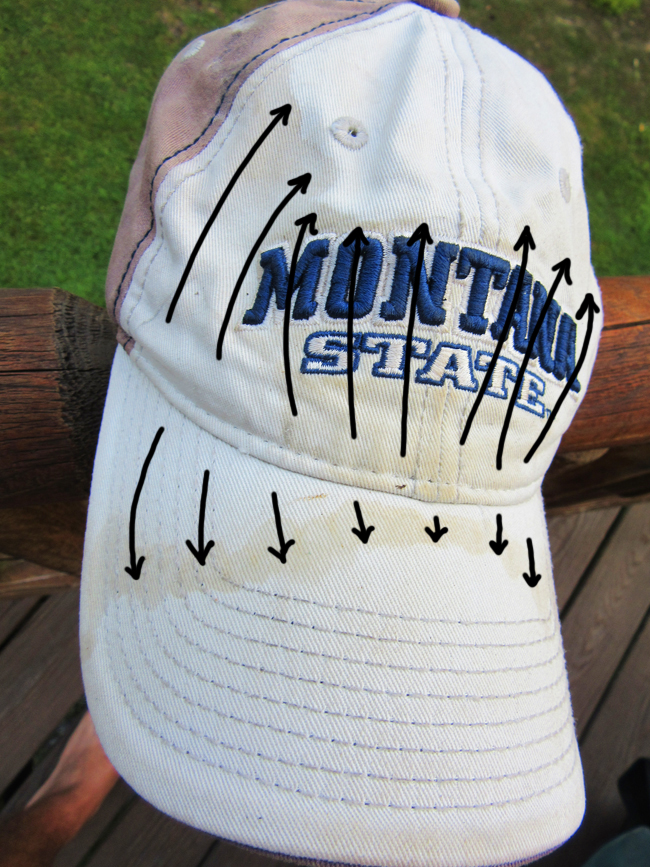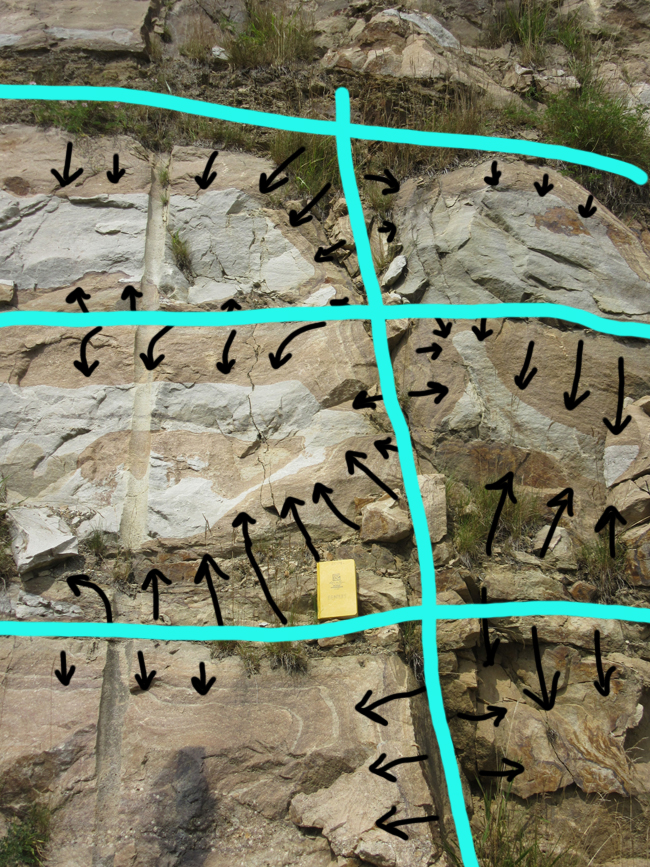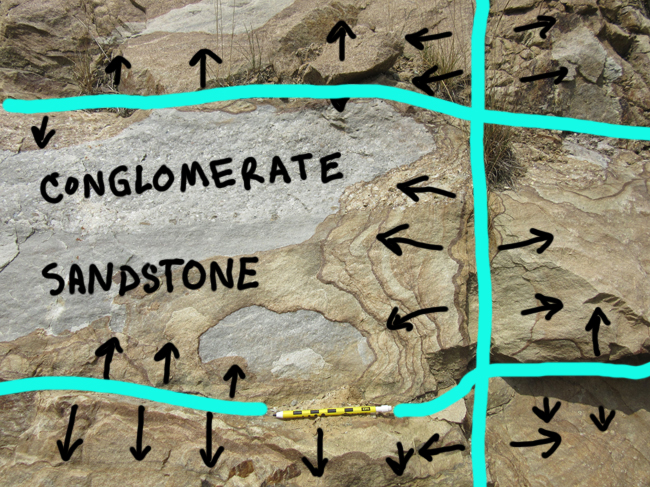Have you ever found a rock sample that looked something like this?

It’s got a lot of rust, but mainly around the edges. What’s up with that?
Check out my hat for a clue – this is after a long hot afternoon picking apples in the sun on Sunday:

Did you see the dirty “rind” where my sweat soaked in and moved dirt and grime along with its flow, to accumulate at the edge of the soaked zone? Flow paths depicted in the annotated version below:

In the same way, fractures (joints and faults) in rock can serve as conduits for fluid flow, and surfaces along which subterranean fluids can soak into the “fabric” of the surrounding rock.


In the case of this sandstone, the white is “unsoaked” and the brown shows the rusty signature of overlapping successive “soaking fronts”:

All the rock examples in this post are from the new Bismarck, WV, outcrop of Conemaugh Group sedimentary rocks exposed along Corridor H. Here’s an example of conglomerate overlying sandstone, with both hosting the Liesegang-like iron oxide banding:


Zooming in on the contact:

These features can be quite beautiful, making Rorschach-blot like patterns in the rock…


I have seen this is volcanic tuffs too, would the mechanism be the same
Me too – yes; I would think it would be identical.
Thanks for the pictorial, the hat (MSU-good choice) explains it perfectly.
Did these rust bands happen after exposure of the cliff-face, or was it buried in the cliff and became visible when the highway was made? Do they happen only along fractures in the rock, and do they permeate through the rock between the grains or do they only form on the surface along a fracture?
Hi Fred,
No – they form underground, long prior to exposure of the cliff-face. They happen wherever fluids of the right chemical composition percolate through the rock – that can happen between the grains, but it’s more efficient for fluids to flow through fractures. So: both!
CB
Is this a process that can happen over short time periods like years or decades, or is it a much longer process? I find sandstone pieces where we live that have dark brown coatings on one or two sides, then have those paler bands underneath toward the center of the rock. I was thinking they must have been fractured underground then soaked before they were exposed by erosion. Thanks for posting this, it’s a great illustration of the process.
I’m afraid I don’t know the answer to that one. It’s a great question!